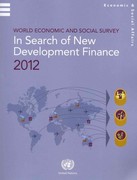Question
In this question, we will study Renee's incentives when it comes to reporting unobserved income to the tax authority. Renee works as a dance teacher.
In this question, we will study Renee's incentives when it comes to reporting unobserved income to the tax authority. Renee works as a dance teacher. Some of her students pay her in cash at the end of a class. Accordingly, Renee has the opportunity to earn cash income (in addition to other forms of payments that she reports) that are not reported to the Australian Tax Offifice (ATO). Her cash income is rather variable. Suppose that in a good year (G), she earns a high income, so her tax liability to the ATO is $5,000. In a bad year (B), she earns a low income, and her tax liability to the ATO is $0. The ATO knows that the probability of Renee's having a good year is 0.6, and the probability of her having a bad year is 0.4, but it doesn't know for sure which outcome has resulted for Renee this tax year.
In this game, first Renee decides how much income to report to the ATO. If she reports high income (H), she pays the ATO $5,000. If she reports low income (L), she pays the ATO $0. Then the ATO has to decide whether to audit Renee. If she reports high income, they do not audit, because they automatically know they're already receiving the tax payment Renee owes. If she reports low income, then the ATO can either audit (A) or not audit (N). When the ATO audits, it costs the ATO $1,000 in administrative costs, and also costs Renee $1,000 in the opportunity cost of the time spent gathering bank records and meeting with the auditor. If the ATO audits Renee in a bad year (B), then she owes nothing to the ATO, although she and the ATO have each incurred the $1,000 auditing cost. If the ATO audits Renee in a good year (G), then she has to pay the $5,000 she owes to the ATO, in addition to her and the ATO each incurring the cost of auditing.
(a) Suppose that Renee has a good year (G), but she reports low income (L). Suppose the ATO then audits her (A). What is the total payoff to Renee, and what is the total payoff to the ATO?
(b) Which of the two players has an incentive to bluff (that is, to give a false signal) in this game? What would bluffifing consist of?
(c) Show this game in extensive form. (Be careful about information sets, as we discussed in class.)
(d) How many pure strategies does each player have in this game? Explain your reasoning.
(e) Write down the strategic-form (simultaneous form) game matrix for this game. Find all of the Nash equilibria to this game. Identify whether the equilibria you fifind are separating, pooling, or semiseparating.
(f) Let p equal the probability that Renee has a good year. In the original version of this problem, we had p = 0.6. Find a value of p such that Renee always reports low income in equilibrium.
(g) What is the full range of values of p for which Renee always reports low income in equilibrium?
(h) An auditor for the ATO is reviewing Renee's latest tax return, on which she reports having had a bad year. Assume that Renee is playing according to her equilibrium strategy and that the auditor knows this. What is the probability that Renee had a good year given that she reports having had a bad year? Explain why your answer is more or less than the baseline probability of having a good year, 0.6
Step by Step Solution
There are 3 Steps involved in it
Step: 1

Get Instant Access to Expert-Tailored Solutions
See step-by-step solutions with expert insights and AI powered tools for academic success
Step: 2

Step: 3

Ace Your Homework with AI
Get the answers you need in no time with our AI-driven, step-by-step assistance
Get Started


